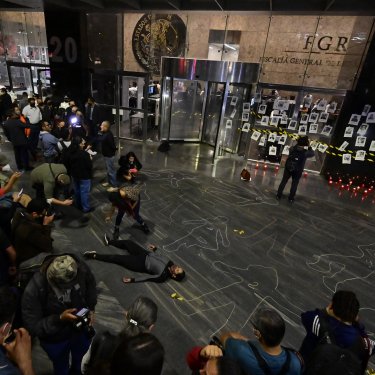This is already the deadliest year ever for Mexico’s media

Following the murders of four more journalists in Mexico in August, this year is already the deadliest ever for Mexico’s media, with a total of 14 journalists so far killed. This shocking situation calls for urgent action by Mexico’s government, says Reporters Without Borders (RSF).
“The number of journalists killed in Mexico is staggering and seems to keep growing inexorably without the federal government or local authorities taking stock of the situation and taking the required bold decisions,” said Emmanuel Colombié, the head of RSF’s Latin America bureau. “This dramatic toll demands an urgent overhaul of risk prevention, protection and judicial mechanisms, and the creation of a comprehensive, long-term policy to guarantee the safety of journalists, whose role is vital for Mexican democracy. RSF requests an urgent meeting with President López Obrador to identify immediate, concrete solutions to stem this spiral of violence and impunity. RSF also calls on Michoacán governor Alfredo Ramirez Bedolla, Veracruz governor Cuitláhuac García Jiménez and Sonora governor Alfonso Durazo to strengthen their protection measures for the media and to identify the perpetrators and instigators of the murders of journalists in their states in recent years.”
With 14 journalists murdered in eight months – of whom at least ten were killed in direct connection with their journalistic activities – Mexico is experiencing the deadliest year for the media in its history.
RSF is aware of at least 36 murders of journalists since Andrés Manuel López Obrador was sworn in as president in December 2019. Two other journalists – Jorge Molotzin Centlal and Pablo Felipe Romero Chávez – also disappeared in the northwestern border state of Sonora in 2021. Most of the murders have been concentrated in states with high levels of corruption and organised crime – Michoacán in the southwest, Veracruz in the southeast, and Sonora, with five cases each. Impunity has been almost total in the overwhelming majority of these 38 cases.
Mexico is the world’s deadliest country for the media for the fourth year running in 2022, ahead of countries at war such Ukraine (with eight media deaths) and Yemen (with three). President López Obrador has publicly condemned only five of Mexico’s 14 murders – figures that make the head spin.
The latest is that of Fredid Román, the victim of a contract-style killing in Chilpancingo, the capital of the southern state of Guerrero, on 23 August. He had just set off from his home in his car when two helmeted individuals on a motorcycle drew alongside, opened fire and then sped away. He died on the spot.
Aged 59, Román was a columnist for the local daily Vértice and occasional contributor to other local media. He used to be the editor of La Realidad, a newspaper that he founded, but it had to close because of a lack of financial resources. In all of his columns, he was very critical of the Guerrero state government and local corruption.
Vertíce’s editor told RSF that Román, “had not reported receiving threats linked to his work and had not been incorporated into any official protection mechanism.” But Román’s nephew publicly blamed a local criminal group called Los Ardillos, claiming that it recently threatened to kill his uncle on several occasions. Román’s son was murdered in Chilpancingo on 1 July, and the local authorities have said they are trying to establish whether the two murders are linked.
The other three journalists to be murdered in Mexico in August are Ernesto Méndez (on 3 August in Guanajuato state), Juan Arjón López (on 9 August in Sonora state) and Alán González (on 11 August in Chihuahua state). Like Román, all of them had denounced corruption and violence in their region. RSF has not yet been able to establish a direct link between their murders and their journalistic work, but is continuing to investigate and document the exact circumstances of their deaths.
At least 10 journalists have been killed in direct connection with their work in 2022. They are José Luis Gamboa Arenas (on 10 January), Alfonso Margarito Martínez Esquivel (on 17 January), Lourdes Maldonado López (on 23 January), Roberto Toledo (on 31 January), Heber López (on 10 February), Jorge Luis Camero Zazueta (on 24 February), Juan Carlos Muñiz (on 4 March), Armando Linares López (on 15 March), Luis Enrique Ramírez (on 5 May) and Antonio de la Cruz (on 29 June). Eight of these ten journalists had reported receiving threats prior to their murder
